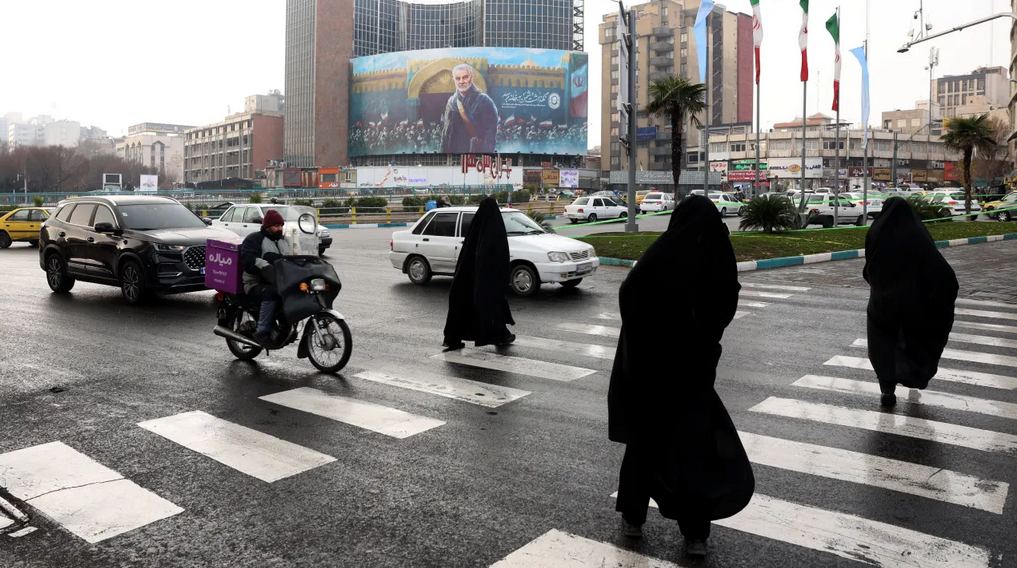
Iran begins this year severely weakened, bereft of most of its regional proxies and its main Middle East ally, Syria. Its economy, wracked by sanctions, is in free fall. Popular discontent is rising, as Iranians stage strikes and protests over poor living conditions. And Ayatollah Ali Khamenei, Iran’s supreme leader, turning 86 in April, is reported to be in failing health. Rumors swirl that his unpopular son could be his successor.
The country’s precarious situation offers a choice — for the mullahs in Tehran and for the incoming administration of President-elect Donald Trump in Washington — between negotiation and confrontation. Each side’s decision in this pivotal moment will shape the other’s response. The best course for the region and the world is negotiation. The alternative — all-out conflict — would be calamitous.
For Iran, negotiation would require some painful policy adjustments. To start with, its leaders would have to end their regional belligerence and renew talks to halt their development of a nuclear weapon — now believed to be only months, if not weeks, from the finish line. They would also need to give a freer hand to government reformists who want to try to repair the battered Iranian economy and pursue relief from U.S. sanctions. And they would need to ease their embrace of Russian President Vladimir Putin and stop supplying the Russian military with drones and short-range missiles for use against Ukraine.
Such a path makes sense, given how Iran arrived at its weakened position. Hamas in Gaza and Hezbollah in southern Lebanon, the main regional proxies of Iran’s “axis of resistance,” have been decimated by Israel’s relentless military campaign, launched in retaliation for Hamas’s terrorist attack on Oct. 7, 2023. Only the Houthis in Yemen are still firing missiles into Israel, but the Israelis have been pounding Yemen’s ports, oil facilities and international airport in Sanaa, so with luck the Houthis’ mischief will soon end.
Last month, a rebel alliance largely backed by Turkey marched through Syria and toppled the hated dictator Bashar al-Assad, Iran’s principal ally, precipitating an Iranian military withdrawal from the country.
Meanwhile, the Iranian economy is reeling from years of government mismanagement and U.S. sanctions.. Inflation last year averaged about 30 percent — down from about 40 percent in 2023 — and the rial has lost half its value. Shopkeepers, nurses, port workers and retirees have staged protests over inflation and unpaid or delayed wages and benefits. Add to this the reports that the supreme leader is ailing, and that Iran’s clerical elders have secretly chosen his son, Mojtaba Khamenei, as his successor but are too afraid of public anger and unrest to announce it. Mojtaba Khamenei is best known for his role in violently suppressing a popular uprising in 2009.
In such a weakened condition, Iran might want to find some accommodation with the West, including the United States, which the clerics have long vilified as “the Great Satan.” Indeed, this month, Foreign Minister Abbas Araghchi signaled that his country was open to renewed talks.
The alternative path — confrontation — could involve Iran trying to produce a nuclear weapon as soon as it can. It could mean that leaders increase repression at home to stamp out the embers of unrest. They could also try to expand terrorism around the Middle East and the world. And they could move even closer to Moscow and Beijing. Iran has recently accepted the invitation to join the BRICS grouping, initially consisting of Brazil, Russia, India, China and South Africa, which aims to challenge the United States’ global financial dominance.
Mr. Trump also faces a choice on how to deal with Iran. He could opt for confrontation from the moment he takes office Jan. 20. This could mean that the United States would ratchet up what the president-elect’s aides have called a “maximum pressure” campaign, including expanded sanctions and more vigorous enforcement of existing ones. It could mean more strictly enforcing secondary sanctions against other countries and corporations that are doing business with Iran.
Mr. Trump might even order direct military strikes against Iran’s nuclear facilities or, more likely, approve an Israeli strike against those facilities.
But a confrontational approach to Iran carries risks. The regime in Tehran might be unpopular, but a military strike by the United States and Israel would enable leaders to rally public opinion. And recent history has shown that military interventions in the Middle East often have unintended consequences. Consider the chaos in Libya.
Mr. Trump’s better choice is to return to negotiation. In his first campaign for president, he disparaged the Iran nuclear deal that had been painstakingly negotiated during President Barack Obama’s administration. When Mr. Trump became president, he withdrew from the deal. His promise to negotiate something better never materialized.







